The Fanatec CSL Cockpit in a nutshell
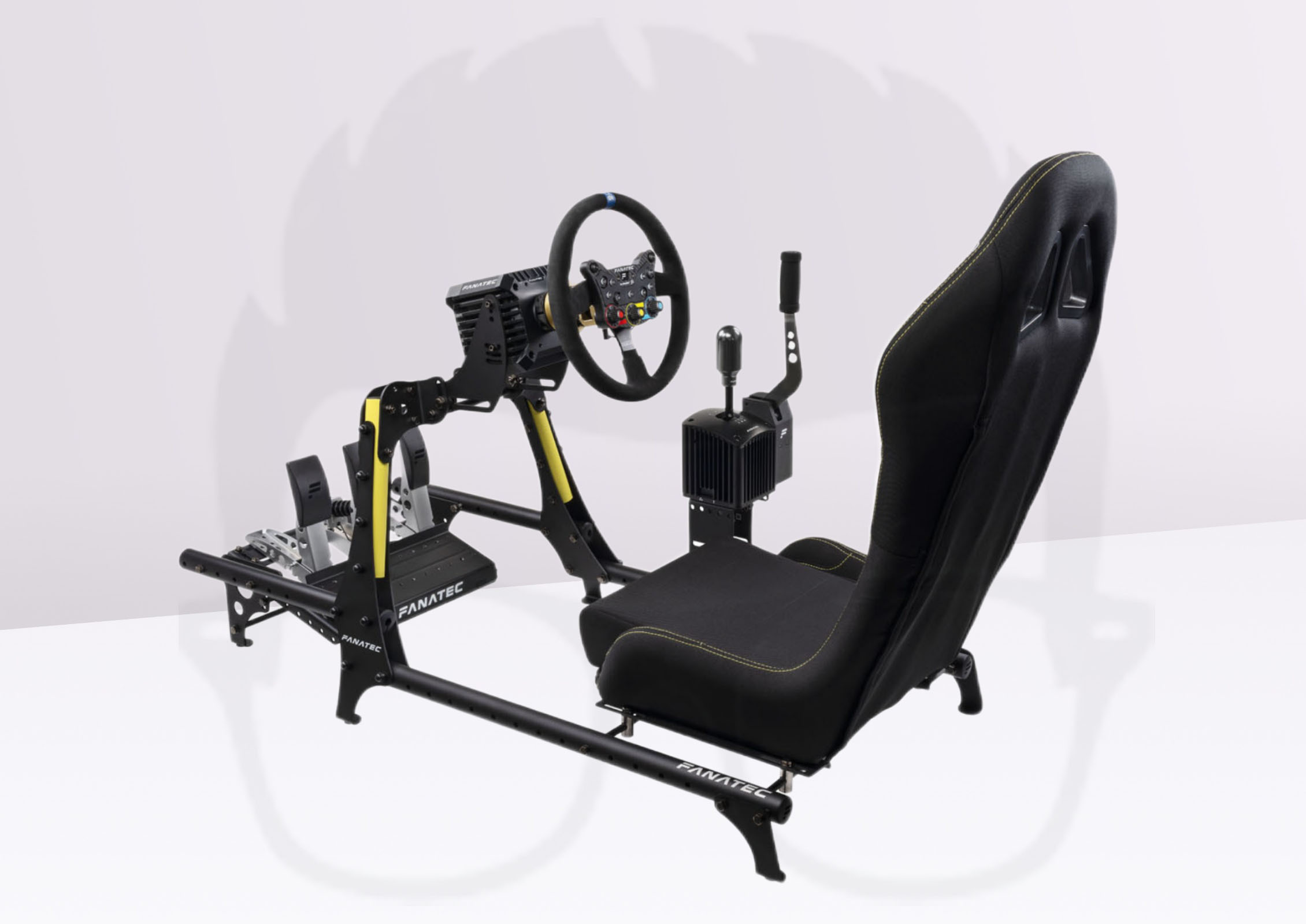
Advantages & Disadvantages
✅ Robust tubular design
✅ Compatible with all Fanatec products
✅ Competitive pricing
❌ Seat and other supports sold separately
❌ Seat without slide, requiring keys for adjustment
ㅤ
Fanatec has been a major player in the sim-racing industry for over 20 years. The brand’s experience, especially in Direct Drive bases, no longer really needs proving. It was Fanatec, a few years ago, that democratized inexpensive Direct Drive bases for the common man, with its 5 and 8 nmCSL DDs.
Thanks to these two devices, a whole new segment has emerged: that of low-power bases. Indeed, the lower end of the market was mainly dominated by Logitech and Thrustmaster, with products driven by gears or belts. Both technologies are fine, but are no match for Direct Drive.
With a view to expanding its range, Fanatec has just launched a product to complete its catalog. Those in the know know that the German sim-racing giant was missing something, and that was cockpits. But that’s all changed with the arrival of the CSL Cockpit, a compact and inexpensive chassis that adds another good reason to dive into the Fanatec ecosystem.
Main and technical cockpit features
- Aluminum tubular frame with steel reinforcements and gears
- Supports all recent sim-racing peripherals available in the Fanatec catalog
- Chassis with GT, Rally and Nascar driving positions. Can also be configured for karting
- Angle- and depth-adjustable bottom bracket
- Base support adjustable between 0 and 30°.
- Adjustable seat support, with the option of
- Screen support for monitors up to 34” wide, and 49” ultrawide
CSL Cockpit design
The CSL Cockpit takes much of its inspiration, in my opinion, from stands and other steering-wheel supports: the tubular design is simple, minimalist and restrained in terms of color. The structure is aluminum tubing, with steel reinforcements. The seat is bolted to a base, as is the pedal unit.
The black color of the CSL Cockpit suits it very well, dotted with a few brand logos and two yellow tubes at the base support. As far as I’m concerned, it’s very handsome and, above all, minimalist. It’s a nice change from the competition in this segment, notably Next Level Racing with its designs using lots of red.
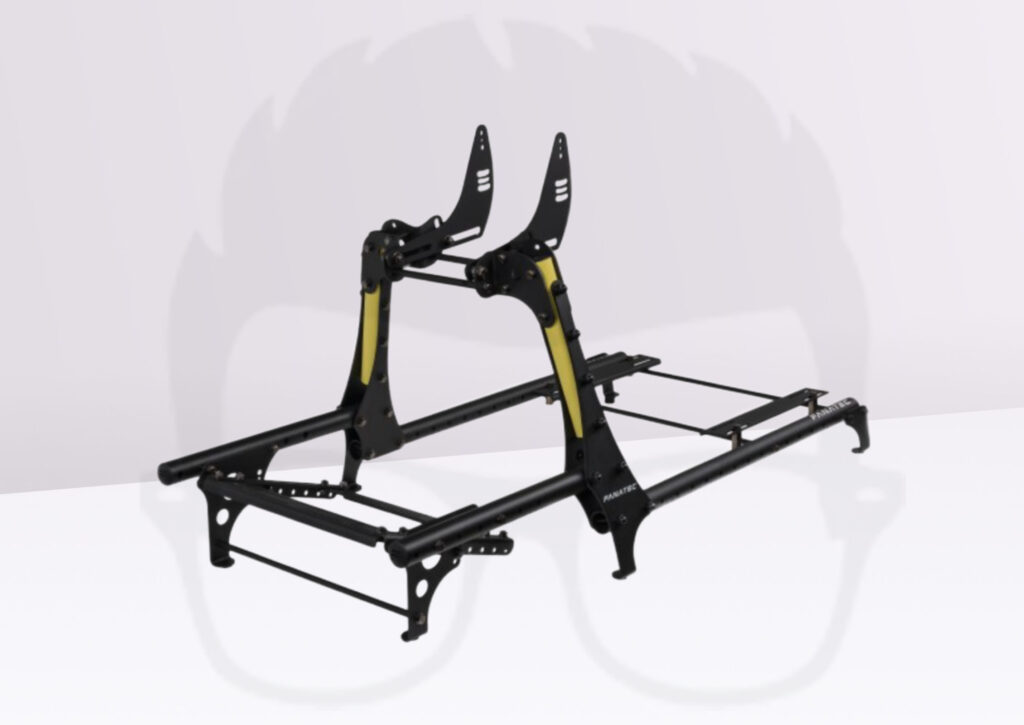
Cockpit assembly
The CSL Cockpit will be delivered completely disassembled, and the task of assembling it will fall to you. It’s not an arduous operation in itself, but it will take some time nonetheless, especially if you do it alone.
Even though the CSL Cockpit is a compact chassis, you’ll need a second pair of hands to assemble it if you’re a novice. Pros will find it quick and easy to assemble, largely due to the well-packaged parts and clear instructions.
Customized assembly
This cockpit is compatible with the entire current Fanatec ecosystem, including CSL DD, ClubSport DD and Podium DD for bases, CSL and ClubSport Pedals for cranksets, ClubSport Shifter and Handbrake.
For the pedals, you can use those of other brands, such as Moza or Thrustmaster, as the mounting pattern remains the same. As for the shifter and handbrake, the bracket (sold separately) can accommodate those of other brands, but you’ll have trouble installing the larger ones. This cockpit has been developed and designed to accommodate Fanatec products first and foremost, and this is confirmed by the basic bracket, which only supports Fanatec products. What’s more, you can adjust the inclination of the bases (between 0 and 30°), depending on which one you have or will choose; CSLs offer the widest angle, and Podiums the narrowest, due to their size.
Fanatec also offers a new seat (CSL Cockpit Seat) for its chassis. It’s quick to assemble on its base, but unfortunately there are no slides, which can make adjustment operations a bit tedious if there are two of you using the CSL Cockpit. But hey, at this price, I can overlook that.
Manufacturing and finishing
Fanatec uses aluminum for the tubular structure, and steel for the reinforcements and brackets. It’s very well made, as we’re used to seeing on the German brand’s peripherals. The quality is there, from the metal parts to the brackets and paintwork.
The whole structure of the CSL Cockpit is really solid and well made for a compact chassis. And it’s worth noting that it’s compatible with the Podium DD2, a base model that develops 25 nm of torque. Even if this is Fanatec’s first rodeo in the cockpit world, frankly, it’s a success.
Sensations during play
So, how good is the CSL Cockpit as a rig sim-racing system? Well, it’s a very good start for Fanatec. The structure is solid, and I tried it out with a ClubSport DD+, which still spits out 15 nm of constant torque.
In terms of adjustment, the angle on the base is between 0 and 30°, but this depends on the base used. Let me explain: on a CSL DD, you’ll get the full 30°, given its relatively small size. But with a Podium DD1 or DD2, you’ll have a smaller angle because of the size of the base.
As for the seat, the CSL Cockpit Seat is very easy to assemble on its frame, but it’s limited in terms of adjustment. By that I mean you’ll have to get the keys out every time you want to change the driving position, because there are no slides. But then, on an entry-level cockpit, I can understand that.
On the pedalboard base, you can fit a good number of peripherals from Fanatec or other brands. However, I did feel a slight flexing under heavy braking with the Load Cell. I can’t say for sure, but it’s not too bad.
As for the shifter/handbrake support, it’s very well positioned, and perfectly suited to Fanatec products.
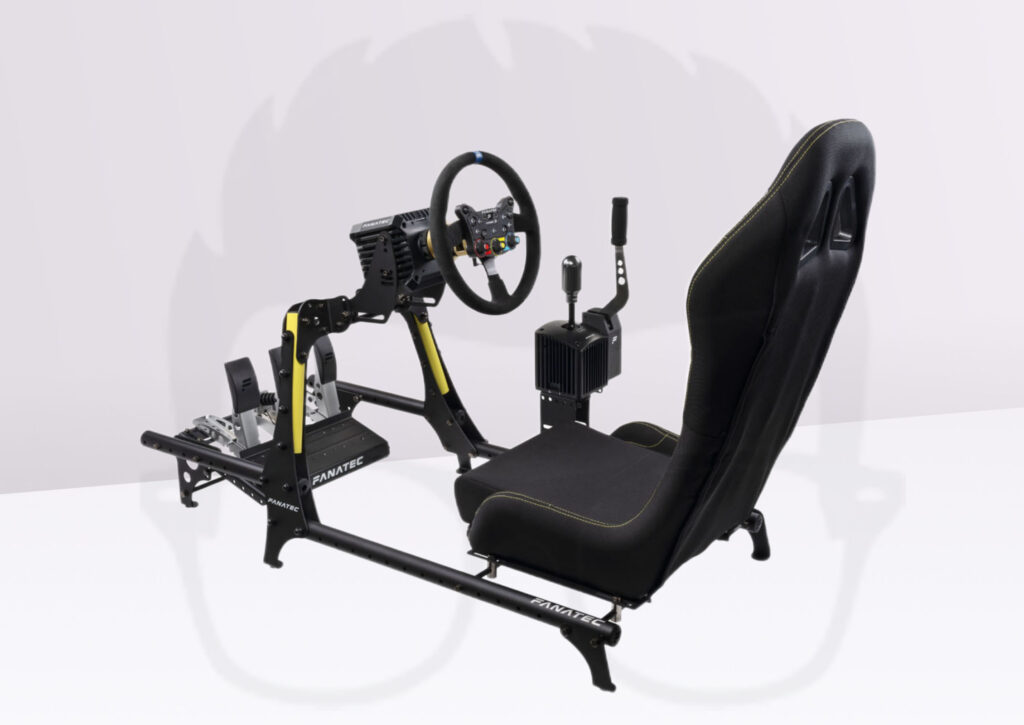
CSL Cockpit compatibility
This chassis is compatible with all Fanatec sim-racing peripherals, and I really don’t need to mention it. You can install bases from the least powerful to the big daddy Podium DD2, and it won’t plug in at all.
The pedalboard base, meanwhile, is compatible with peripherals from other brands, such as Moza or Thrustmaster. However, the shifter/handbrake side mount is small and will limit your options. Basically, you’ll only be able to install one competitor’s peripheral, but both from Fanatec.
For the seat, it’s pretty standard, but there’s no slide. On the other hand, for the base, only Fanatec’s are taken into account, and recent ones only with lateral attachment.
Value for money
The CSL Cockpit retails for €400 in bare-bones configuration. I think the value for money is very good, especially with the excellent finish of the chassis, as well as its sturdiness. It’s a compact but very robust cockpit for sim-racing. What’s more, the seat will only cost you €100 extra, and that’s an excellent deal as far as I’m concerned.
My verdict on Fanatec’s CSL cockpit
Fanatec’s first chassis is a success in almost every respect. It’s perfect for riders who already have the German brand’s peripherals, or at least the basics, and also for those who want to build a complete rig.
If you’re already a Fanatec customer, I recommend the CSL Cockpit. You’ll be happy with it in almost every respect. What’s more, the complete chassis will cost you just €600 with all brackets.

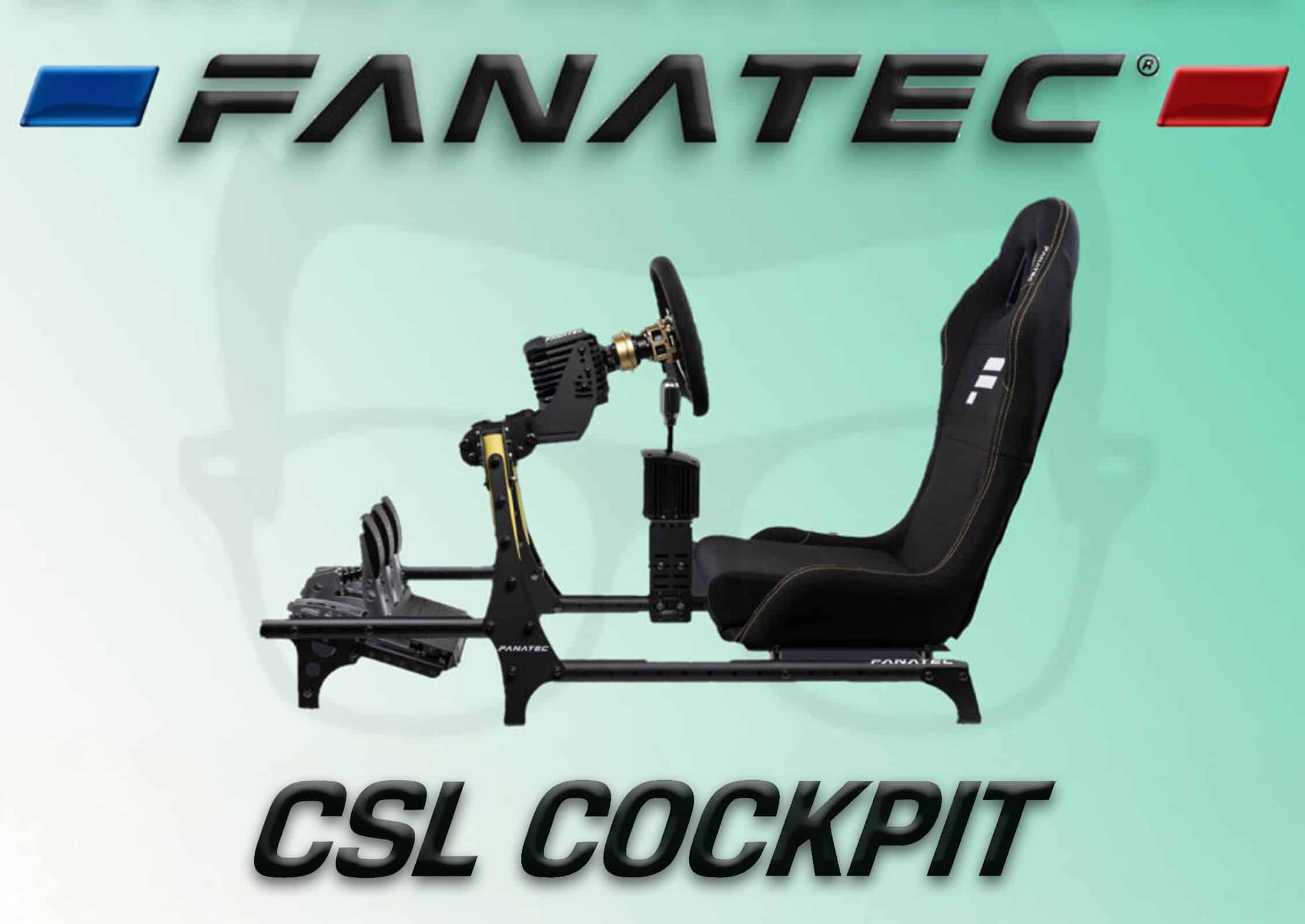

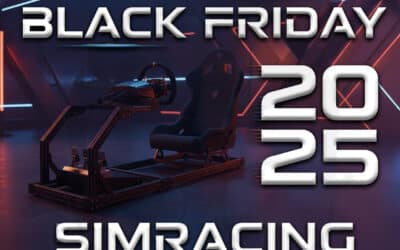
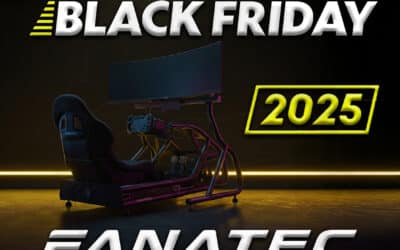
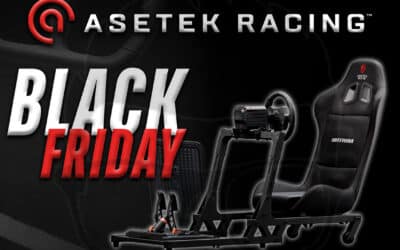
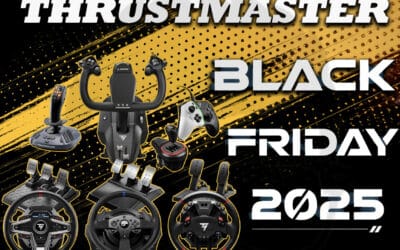
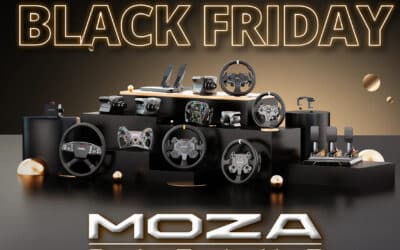
0 Comments